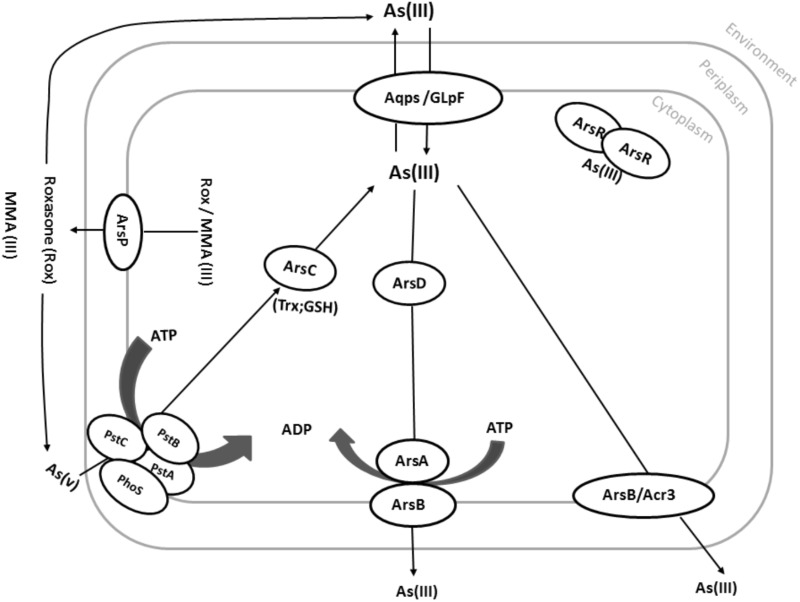FIGURE 3.
Common pathways in arsenic resistance on prokaryotes. Under aerobic conditions, As(V) enters the cell via phosphate uptake systems (here PstA, PstB, PstC, and PhoS). As(V) is then reduced by the arsenate reductase ArsC to As(III). Although As(III) is more toxic than As(V), As(III) can easily be distinguished from phosphate, which is very similar to As(V). As(III) can also directly be taken up by various aquaglyceroporins such as GlpF from E. coli. As(III) can then be translocated across the cytoplasmic membrane via Acr3 or ArsB using the proton motive force (PMF). Alternatively, As(III) can be bound by the As(III)-binding chaperone ArsD and delivered to the ATP-dependent ArsAB efflux pump. Organic arsenic compounds such as MMA(III) and Roxarsone can also be pumped out by the ArsP transporter.

